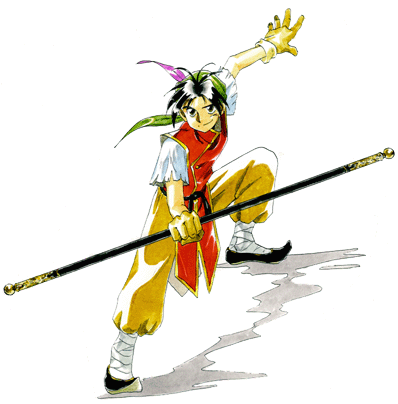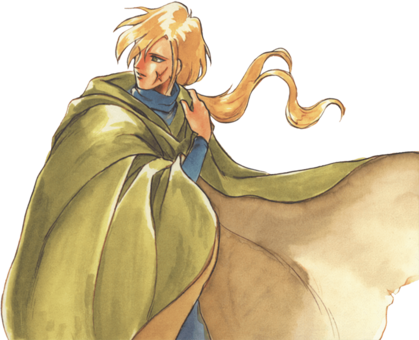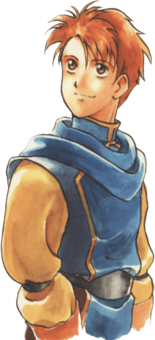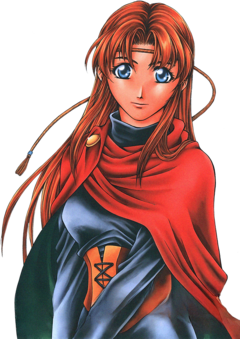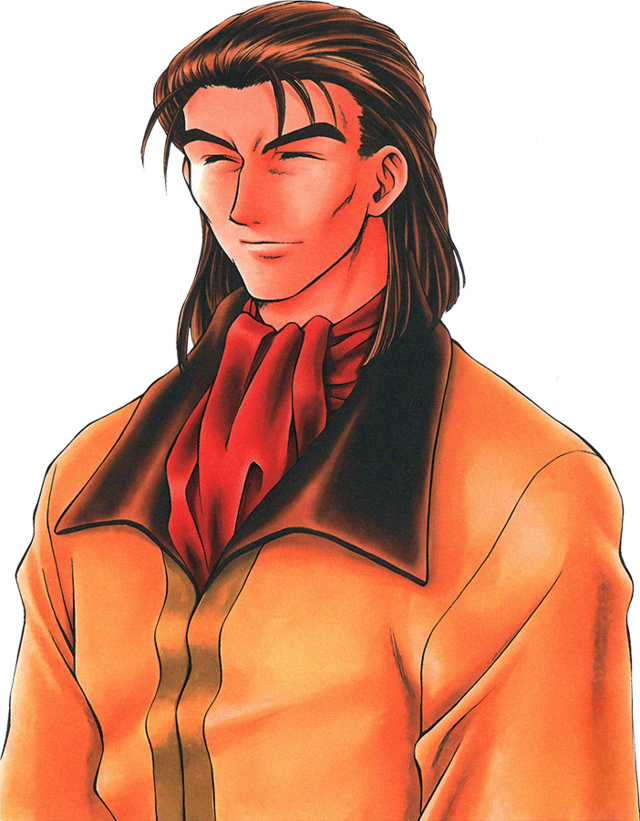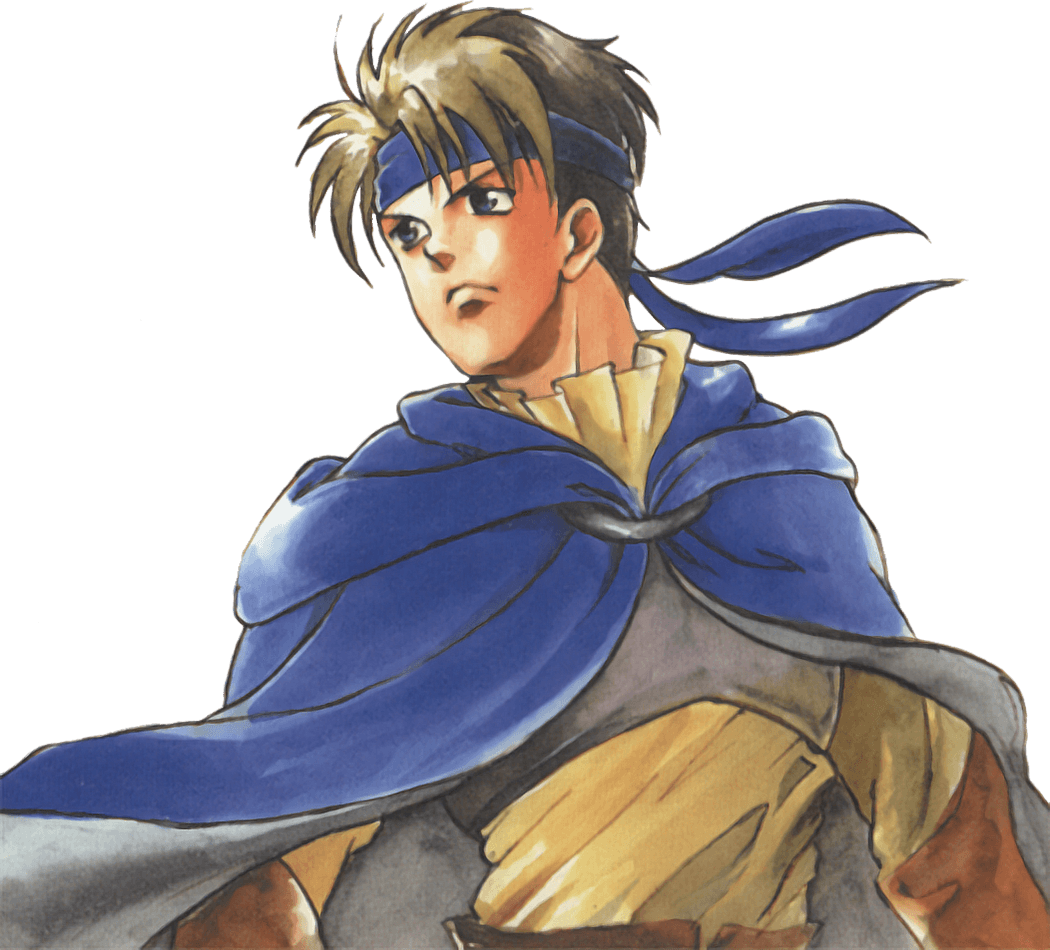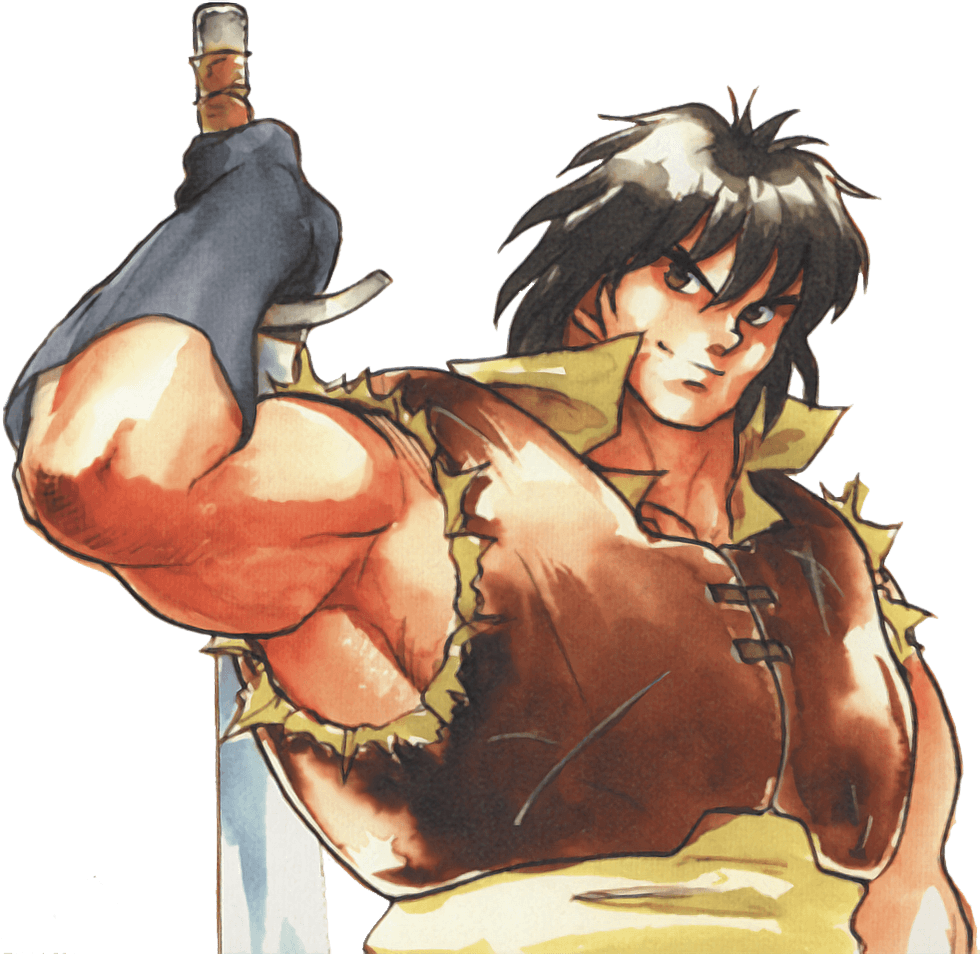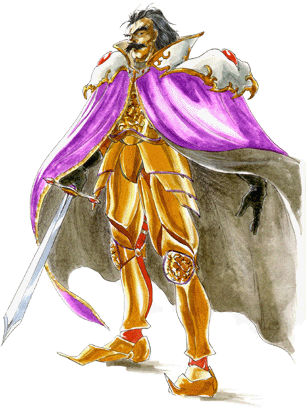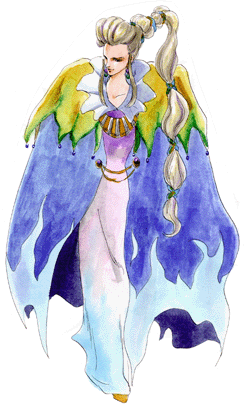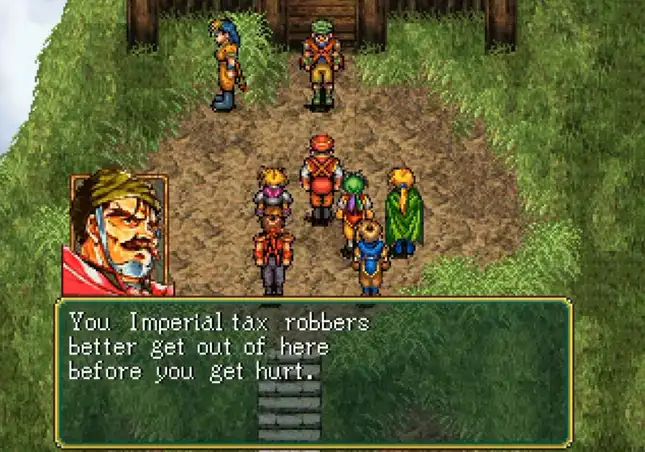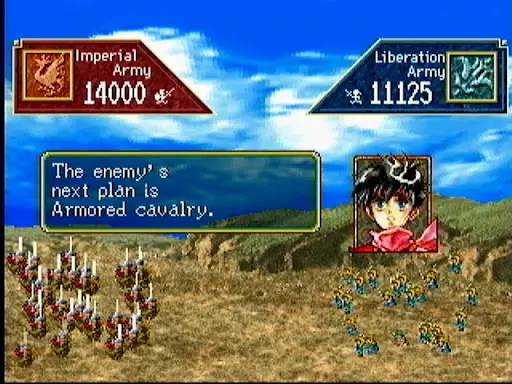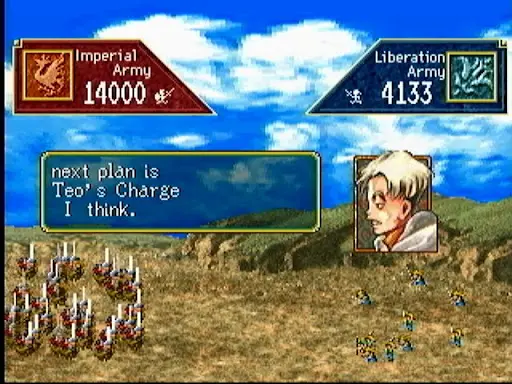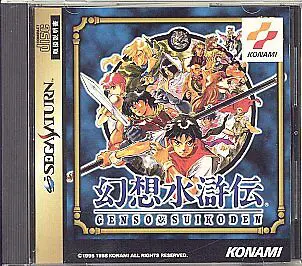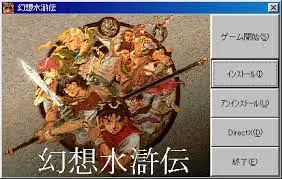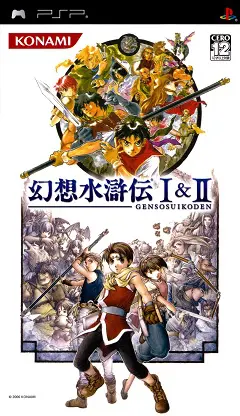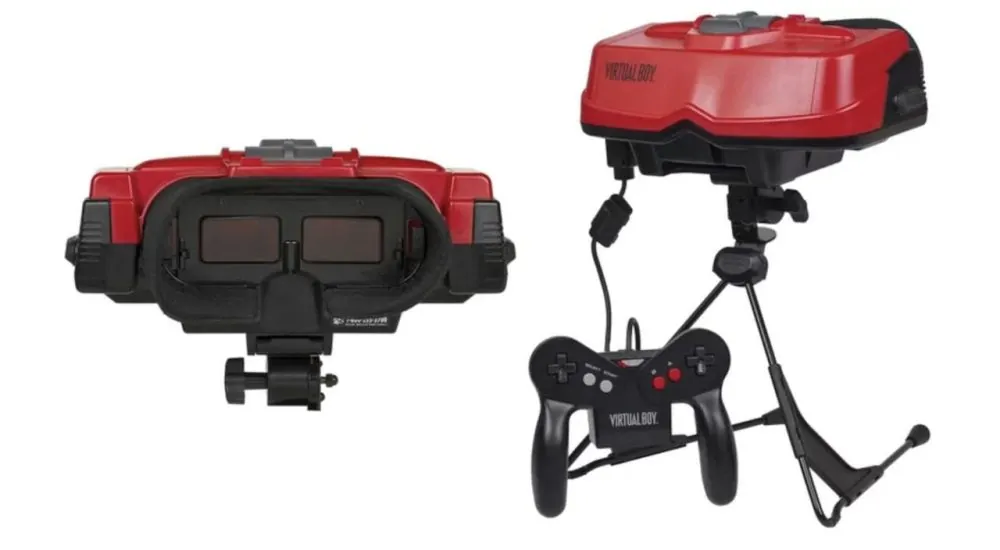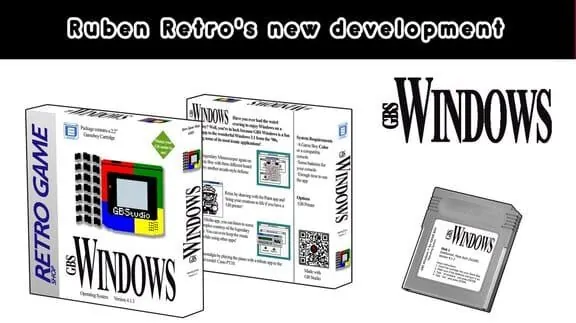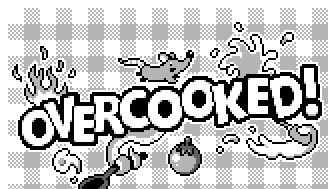The tale of the inaugural Suikoden commences with Tir McDohl, the offspring of the renowned general Teo McDohl of the Scarlet Empire. As his father assumes command of battles in the northern regions, Tir and his allies remain in the empire. Initially relegated to menial tasks, Tir’s destiny takes an unexpected turn. While on a mission to apprehend local bandits, the group encounters a formidable beast. To vanquish this foe, one of Tir’s companions harnesses potent magic against it, piquing the interest of the nobles of the Scarlet Moon Empire, particularly Windy, the court magician. Windy’s coveting of this power leads to turmoil for Tir and his allies, resulting in their forced exile. Adding to his burden, Tir becomes possessed by the Soul Eater Rune, one of the 27 True Runes that govern life and death. He later crosses paths with Odessa, leader of the liberation army, and through a series of events, assumes her mantle. Now, Tir must overthrow the Scarlet Moon Empire, once his home.
Characters
Tir McDohl
A young man from Gregminister, Tir experiences a monumental shift in his life upon wielding the Soul Eater Rune. In the manga version, he is known as Ryui.
Gremio
In the absence of Tir’s father, Gremio assumes the role of caretaker for young Tir. Although officially a servant of the McDohls, he treats Tir as his own son.
Ted
One of Tir’s closest companions, Ted’s background is shrouded in mystery. He harbors the infamous Soul Eater Rune, a secret he must guard closely. Despite this, he displays kindness to his comrades.
Odessa Silverberg
Leader of the liberation army, Odessa harbors intense disdain for the corruption that plagues the Scarlet Moon Empire.
Mathiu Silverberg
Odessa’s brother, Mathiu’s relationship with his sister is strained due to their differing stances on the war. He serves as the primary tactician in this narrative.
Flik
A member of the resistance and Odessa’s paramour, Flik is known for his passionate nature and striking appearance.
Viktor
A wandering swordsman, Viktor frequently becomes embroiled in regional conflicts due to his nomadic tendencies. Although some of his methods may seem brusque, he possesses cunning strategies.
Barbarossa
Emperor of the Scarlet Moon Empire, Barbarossa adopts a passive approach to governing the kingdom following the Queen’s demise, allowing the aristocrats to pursue their own agendas.
Windy
A court magician with an uncanny resemblance to Barbarossa’s late wife, Windy manipulates others to further her own ambitions. Despite her considerable political influence, it is never enough for her relentless pursuit of power.
This inaugural installment in the series lays the groundwork for the battle system seen in subsequent Suikoden games. However, it distinguishes itself with unique features such as the characters retaining their specific weapons instead of acquiring different ones, which can be enhanced by visiting a blacksmith. Additionally, the ability to affix rune pieces to these weapons imbues them with diverse elemental powers. The magic system mirrors that of the original Final Fantasy, with spells categorized by levels and limited uses. Like many early PlayStation JRPGs, Suikoden incorporates frequent random encounters, but the swift pace of battles mitigates the impact of their frequency.# Suikoden: A Review
The tactical army battles in the first installment of Suikoden differentiate it from other games in the series. Take on opponents in a game reminiscent of rock-paper-scissors, requiring strategic prediction and decision-making. Unless equipped with intelligence to anticipate incoming attacks, success often relies on guesswork. While it bears similarities to duel battles, minor distinctions lie in the array of options available to bolster attacks with the aid of other characters.
The visual elements and interface of the game bear the marks of its release during the early PlayStation era, presenting a somewhat dated appearance. The graphics are notably rough and grainy, while the interface proves cumbersome, necessitating frequent item management within the inventory. Additionally, plot-driven character requirements sometimes limit player choice, creating frustration, particularly when striving to recruit all 108 stars. This can force players to either revert to an earlier save or restart the game entirely.
Suikoden I stands as a standard JRPG with a strong Eastern influence, characterized by a relatively simplistic story that can be completed within 15-20 hours. While it may be considered outdated in terms of gameplay, delving into the origins of the story and its connection to Suikoden II still holds value.
Following its initial success, Suikoden was ported to other systems, including the Sega Saturn, approximately three years after its PlayStation debut in 1995. The Saturn version, known as a “Director’s Cut,” features less detailed graphics than its PlayStation counterpart, in addition to noteworthy additions such as a new introduction, modified minigames, and a battle arena for winning rare items. However, the overall experience remains consistent.
Another port brought Suikoden to Windows 95 in Japan, China, and Korea, presenting a rebuild tailored to the Windows interface. This version features separate windows for dialogue, menus, and battle commands, offering interaction via mouse or keyboard input. Despite these changes, the graphics and music align closely with the original PlayStation release.
In 2006, Genso Suikoden I & II was released for the PSP, incorporating elements from the Saturn version such as the opening sequence. Notable differences include widescreen support and the ability for the protagonist to move diagonally, while preserving the core gameplay experience.
Finally, Konami brought Suikoden to mobile phones in 2008, faithfully replicating the original PlayStation version’s content within the format limitations of mobile devices. While these ports were not made available in the West, players in North America obtained access on PlayStation 3 or Vita via PSN, adding accessibility to the title.



